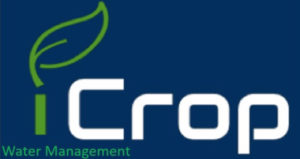Use irrigation scheduling tools to quickly check your soil water balance and weather data to make decisions about how much and when to irrigate. Several free irrigation scheduling tools are now available as smartphone apps as well as for desktop use.


Why use irrigation scheduling tools?
✅ They are cost-effective and convenient
✅ Reduce risk of over- or underwatering
✅ Hit target yield goals
✅ Increase water conservation
✅ Improve your bottom line
Irrigation scheduling may help you shift from static irrigation (more or less constant application rates) to dynamic irrigation (based on crop need, soil moisture & weather)
Fewer than 15% of farms in Ogallala region states report using the following methods to decide when to irrigate:
- commercial or government irrigation scheduling services
- soil moisture sensing devices
- daily crop evapotranspiration (ET) reports to make irrigation management decisions
(Source: 2013 USDA-NASS FRIS Survey)
What tools are available?
The Ogallala Water CAP team is actively working to improve four irrigation scheduling tools that:
- are free to use and are similar to commercial tools requiring a paid subscription
- are available for use with smart phones and/or desktop computers
- keep all information confidential; your data is not collected or stored for other purposes beyond your personal use.
Consider trying one of these tools this growing season!
Highlights





“WISE allows me to see what stage growth the corn is in and how much water it should be using for the next two or three days so I can appropriately decide whether I can get by with shutting the sprinkler off or keep it running.” Corn producer, Yuma, CO
Highlights
✔ Region & Crops: Developed for Kansas crops and region with broad application to other regions and crops.
✔ ET-based water balance irrigation scheduling.
✔ Easily enter crop and growth stage information, soil layer and root information, maximum allowed deficit, irrigation system efficiency, and rainfall discount.
“I have used KanSched for over 20 years. I find it a good tool to monitor and manage irrigation applications and to model crop water use using the checkbook method. Being able to vary, crop coefficients, modify crop growth stages and discount light irrigations is a good foundation for irrigation water management.” Ag engineering consultant, Kansas
Highlights





Ability to evaluate “what-if” scenarios using historic weather, irrigation capacity, and/or other management parameters.
Learn more in this article: “Improving the DIEM Irrigation Scheduler”
“With the current rate of water table decline, all producers need to learn how to use tools like this.” Cotton producer, TX High Plains
Highlights





“I like iCrop because I can use it to predict yield during the growing season as I make irrigation management decisions.” Wheat producer, Western Kansas
“A producer who controls irrigation using a smartphone. A spreadsheet that uses weather data to predict when to water crops. Sensors that read how much water is in the soil. While some technologies may seem farfetched, especially in an agricultural context, they have been an integral, yet underused, part of water management for years.”
From “Twenty-first century irrigation: researchers develop irrigation scheduling tools to help producers manage water.” (Fall, 2018 TXH2O magazine)
Concepts Underlying Irrigation Scheduling
Daily Water Soil Balance
Keep track of the soil water deficit and need to irrigate by accounting for all water additions and subtractions from the soil root zone and monitoring evapotranspiration (ET).
Available Water Capacity (AWC) or Plant Available Water
The soil root zone can be compared to a conceptual “bucket of water,” in which field capacity (FC) represents a full bucket and permanent wilting point (PWP) an empty bucket. The difference between FC and PWP is available water capacity (AWC), a.k.a. plant available water.
The irrigation scheduling tools set a management allowed depletion (MAD) that determines the next irrigation well before the soil reaches “empty” (permanent wilting point). Typically for grain crops, that irrigation recommendations will be triggered at a point that is halfway between field capacity and permanent wilting point.
Irrigation Scheduling Tools for Improved Irrigation Management and Water Use Efficiency
This one-hour webinar covers the basic concepts of irrigation scheduling and a presentation of how the DIEM, WISE, and KanSched tools can help improve water use efficiency.
Visit the Irrigation Innovation Consortium website to access a list of other irrigation management tools, such as crop water allocators, economic comparison tools, and crop yield prediction tools.





